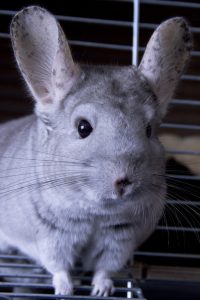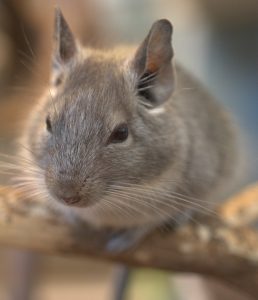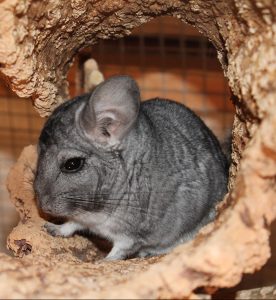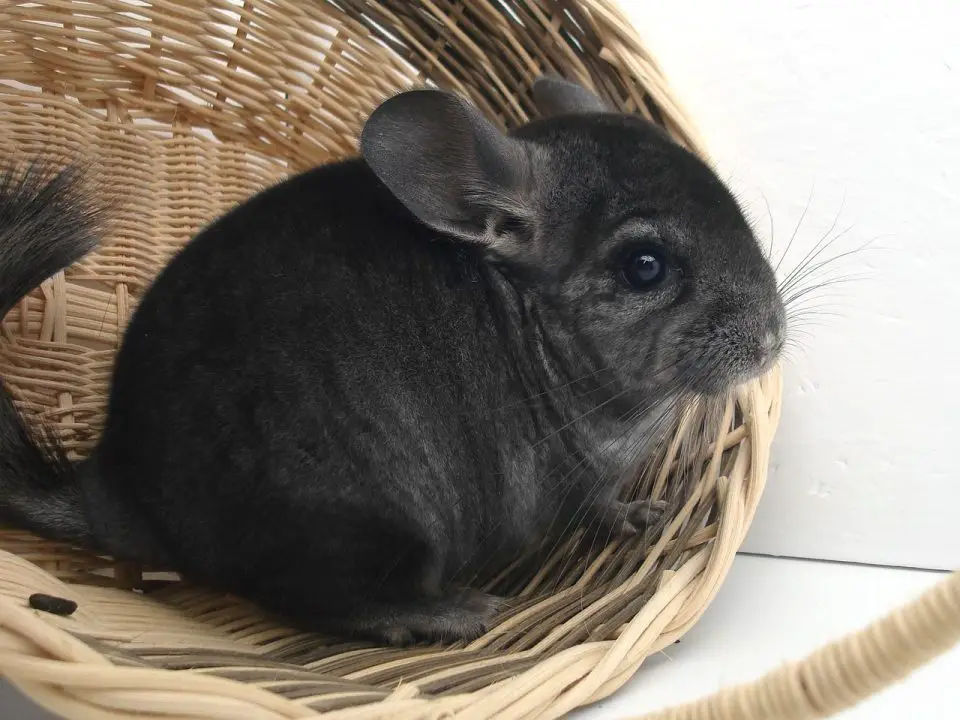Hi, my name’s Irena and I live on the beautiful island of Crete in Greece. I have an amazing dog, Sherlock who is very hyperactive and three cats called Hamlet, Dimitri, and Ebony.
As you can probably guess, Ebony is completely black. Today I’m going to talk to you about the different colors that a Chinchilla can be.
Believe it or not, there are at least twenty colors with some other rare mutations.
What is a Chinchilla?
Chinchillas are small rodents that are native to the Andes Mountains in South America. They are very sociable and live in herds in the wild.
Because of their desire for companionship, it is advisable to get more than one Chinchilla. Otherwise, your Chinchilla will be very lonely unless you have lots of time to spend with it.
They love company and interacting with either you or their fellow Chinchillas.
In the wild, Chinchillas used to live in Bolivia, Peru, Argentina, and Chile, but now they are found mainly in Chile.
They like high elevations as they aren’t keen on it being too hot. In the wild, they can live in elevations up to 14,000 feet.
Chinchillas make great pets because they love social interaction and people. Be prepared for cuddles!
They do like to exercise so get a big cage with different levels for them to leap between and give them toys to play with.
They like to take dust baths, not water baths. You will have to get a bag of special dust for them made from fine pumice.
You will find that they will bathe a few times a week as they like to keep clean.
Useful Things to Know Before you Buy a Chinchilla
There are things you need to know before buying your Chinchillas. Firstly, they have teeth that are continually growing so you will need to keep an eye on them.
They need things to chew on to keep their teeth at a reasonable length. In addition, they can’t sweat so they need the temperature in their room to be controlled.
Chinchillas have very thick fur. In fact, they have the densest fur out of all mammals. Because of this thick fur, they get very few parasites, for example, fleas.
In addition, the fur reduces loose dander. This means that they won’t shed too much and can be suitable for people with allergies.
Chinchillas are not very heavy and they weigh between one and a half pounds. They can be up to a foot long so they’re not as small as many other rodents.
They have rounded eyes and ears which are on either side of their heads. Also, they have long bushy tails.
Chinchillas are both inquisitive and smart and it’s very entertaining to watch them play. However, they are not recommended if you have young children.
Small children can be a little rough even when they are giving affection. This could scare your Chinchillas as they need to be handled gently.
The History of Chinchilla Colors
 Wild Chinchillas come in just one coloring which is a mottled yellow-gray. This helps them to blend in with their natural habitat.
Wild Chinchillas come in just one coloring which is a mottled yellow-gray. This helps them to blend in with their natural habitat.
However, in captivity, they have been bred to have many different colors such as white, beige, violet, sapphire, velvet, ebony, and charcoal.
However, the most common color of domestic Chinchillas is the same as the wild ones.
In the US pet Chinchillas are descendants of just 13 Chinchillas which were brought from South America in 1927.
From there the selective breeding began and the variety of colors was produced.
Chinchillas also have different eye colors which are dependent on the color of their coats. The eyes can be red, pink or black depending on their genes.
For example, white Chinchillas generally have red or pink eyes, while sapphire Chinchillas have black eyes.
The Genetics Behind the Different Colors of a Chinchilla
Now things get a bit more complicated. The different colors of a Chinchilla are due to different genes, some of which are dominant, and others are recessive.
If you combine either two dominant or two recessive genes you get what’s called a homozygous pairing meaning that you will get Chinchillas of just one color.
However, if you pair a dominant gene with a recessive gene, the Chinchillas will probably be mainly the color of the dominant gene.
However, there might also be signs of the recessive gene. This is called a heterozygous pairing.
Let’s take an example. Say you have white Chinchillas. The dominant gene is white, but the Chinchillas also have a sapphire recessive gene which they got from one of their parents.
If you breed these white Chinchillas with sapphire Chinchillas where sapphire is the dominant gene, you will probably get some sapphire Chinchillas in the litter as well as white.
The Pigments of Chinchillas
There is something else that affects the color of your Chinchillas and that’s the pigment they have. There are in fact just two pigments they can have which are black and yellow.
White Chinchillas aren’t included in these pigments. They don’t have any pigment at all which gives them red or pink eyes.
The two different pigments are regulated by the color genes. They influence what color the Chinchillas will be and to what degree.
This is why your Chinchillas can be different colors and even have patterns on their fur. Some Chinchillas end up with a shaded appearance while others will have a solid color.
Experienced breeders can produce a wide variety of colors such as white mosaic and touch of velvet.
The Top 20 Chinchilla Colors
Standard Gray
Captive standard gray Chinchillas look the same as their wild counterparts. You will find that they are the most commonly found pet Chinchillas.
They have no dominant or recessive gene mutations showing. They have gray backs, a white underbelly, and gray sides.
The gray can be any number of shades from light to extra dark. If you look closely at an individual hair from a standard gray you will find that it has a black tip, then a thin white bar and finally it is blue gray at the bottom.
White
A white Chinchilla can come in a variety of colors. Of course, they can be pure white, but if they have been crossed with other colors, different interesting colors can be created such as ebony white or white sapphire.
White Chinchillas that have a solid color usually have red or pink eyes, while color combinations of white and some other color could have either red or black eyes.
Heterozygous Beige
These Chinchillas can come in different shades of beige from light to dark. Usually, their backs are the darkest part of their bodies.
They have white underbellies, red eyes, and pink ears. They are darker than their homozygous counterparts.
The first heterozygous beige Chinchilla was born in the US in 1955, but its owner didn’t think it could be bred again so he sold it. Unfortunately for him, he was wrong and now there are plenty of these around.
Homozygous Beige
 These Chinchillas are also beige, but they are usually lighter than the heterozygous beige. They have two copies of the beige gene, one inherited from each parent.
These Chinchillas are also beige, but they are usually lighter than the heterozygous beige. They have two copies of the beige gene, one inherited from each parent.
They are light brownish beige with a white underbelly and lighter pink ears. You could say that their color is champagne.
As they are a light-colored Chinchilla, their eyes will usually be red, although of course there are exceptions to the rule.
Violet
Violet Chinchillas are very pretty and are slightly purple in color while their underbellies are white. Their eyes are black, and their ears can range from light gray to a slightly pinkish gray.
Their fur doesn’t have the black tipping which standard grays have, and this makes them look soft and cuddly. The parents must each carry the violet gene.
The first violet chinchilla was bred in what is now Zimbabwe but was later sold to a Californian. Now they are very popular Chinchillas in North America.
Sapphire
Sapphire Chinchillas are very similar to Violet Chinchillas in that they don’t have a black tip at the end of each hair. They too need parents with the same gene to produce this color.
Their fur is a soft blue color, their underbelly is white, and they have pink ears and black eyes.
Ebony
There are two different ebony-colored Chinchillas. The homozygous ebony Chinchillas are completely black. The ears are also black as are the eyes.
However, heterozygous ebony Chinchillas can have some touches of gray in their black coats. Their underbellies are a mixture of gray and black and their eyes are black.
Heterozygous Chinchillas can sometimes be mistaken for standard gray Chinchillas if they are a light color.
Charcoal
A Charcoal Chinchilla can come in a range of colors starting from light gray right up to black. Their underbellies are gray, and their fur has a matte appearance.
Their eyes and ears are always black. These days they are quite rare in the US although there are more in the UK.
Black Velvet
Black velvets are very popular and sought after in the Chinchilla community. Their coloring is generally black, but their sides are gray and their underbellies, white.
Both their ears and their eyes are black. The downside of these Chinchillas is that they carry the lethal factor.
This means that you shouldn’t breed these with other Chinchillas carrying the velvet gene.
The result can be the death of the offspring in the womb. Some babies can be born, but the litter size will be much reduced.
Brown Velvet
Other names for these Chinchillas are tov homo beige and tov hetero beige. They too have the lethal factor so don’t breed them with other Chinchillas with the velvet gene.
They have an evenly veiled shade of dark brown across the face, head, neck, shoulders, back, and hips. The brown becomes beige on the sides, they have a white belly and red eyes and pink ears.
If they are homozygous, they will be a lighter shade of brown on the top and sides and their eyes will be a very bright red.
Touch of Velvet
These Chinchillas have very interesting coloring as they have a veiled appearance. They have a dark shade across their faces which goes along their spines down to the tips of their tails.
Their underbellies are white and their eyes black. Once again don’t breed these Chinchillas with other velvet Chinchillas.
White Mosaic
 To get Chinchillas of this color, gray Chinchillas need to be bred with white Chinchillas. You can’t predict exactly which color you will end up with.
To get Chinchillas of this color, gray Chinchillas need to be bred with white Chinchillas. You can’t predict exactly which color you will end up with.
Their colors can be any pattern; mostly white, frosted gray or mostly gray. You might get some unusual and unique shapes and patterns.
All white mosaics have black eyes and dark ears. Unfortunately, these Chinchillas have the lethal factor and shouldn’t be bred with Chinchillas that have the mosaic gene.
The first Chinchilla of this mutation is said to have been born in 1955 in North Carolina and is the first of any color mutations.
Silver Mosaic
Silver mosaics come from breeding gray Chinchillas with white Chinchillas.
They are the same as white mosaics, but the difference between them is that silver mosaics have gray tipped fur rather than patches of gray fur.
They have dark ears and black eyes. These Chinchillas also have the lethal gene and shouldn’t be bred with other mosaics.
Tan Mosaic
To get a tan mosaic Chinchilla, you will need to breed an ebony with a pink white, a white ebony to a beige or a mosaic with a tan.
Because they are mosaics you will find that you will have different coat patterns. Some will be all white, while others will be mostly white, frosted tan or mostly tan.
You can’t breed them to get a specific color and you may get unusual patterns. Tan mosaics all have red eyes and pink ears.
The ebony gene gives a wrapping effect to their bellies which can allow for beige or tan coloration.
Homozygous tan mosaics have brighter red eyes than heterozygous tan mosaics and their fur is usually lighter with few markings.
They too have the lethal factor so don’t breed them with other mosaics.
Ebony Mosaic
Ebony mosaics, like all mosaics, can have many different coat patterns and it is impossible to breed them for specific markings.
They too can have unusual shapes and splodges on their bodies and can be any shade of white from mostly white to frosted gray to mostly ebony.
The ebony gene can give their underbellies ebony or black coloration. They also have the lethal factor so don’t breed them with other mosaics.
Pink White
They are also known as beige mosaics. Because of their genes, they can come in a variety of colors and you won’t know what you’re going to get until the Chinchillas are born.
You could get pure white Chinchillas, mostly white or mostly beige. In addition, you could get some very unusual patterns mixing the white with the beige.
All pink whites have red eyes and pink ears although the homozygous Chinchillas have red eyes that are brighter.
Light and Dark Pastel
Light pastel chinchillas are usually the first-generation offspring of beige and ebony Chinchillas. When they are born, they are almost pure white, but as they grow, they become beige.
Dark pastel Chinchillas have darker coats than light pastel Chinchillas. They are closer to a light brown rather than beige. They are usually born in the third or fourth generation of breeding.
Final Thoughts: Chinchilla Colors
 As can be seen, there is a great variety of Chinchilla colors out there.
As can be seen, there is a great variety of Chinchilla colors out there.
If you go to a pet store you will probably mainly find standard gray Chinchillas, but if you want a specific color you will have to go to a specialized breeder.
They probably have greater knowledge about Chinchillas than a pet store so they will be able to give you advice about how to look after them and how to breed them to get the colors you want if that’s what you want to do.
Chinchillas are lovely furry pets, but just because they are small and live in a cage doesn’t mean that they need any less care than dogs or cats.
They love human company and will bond with you just like dogs or cats. Remember that they are a big commitment as they can live up to 20 years.
